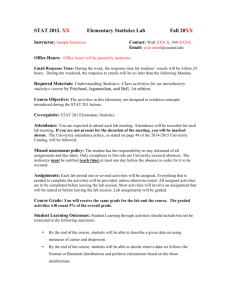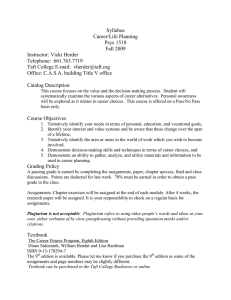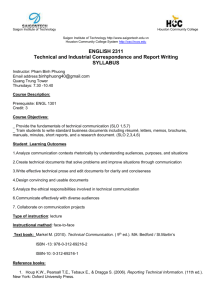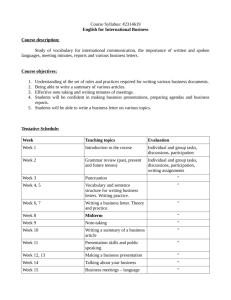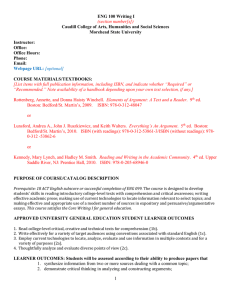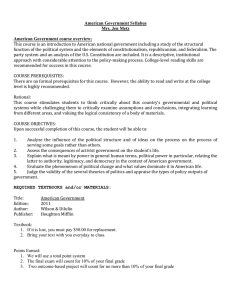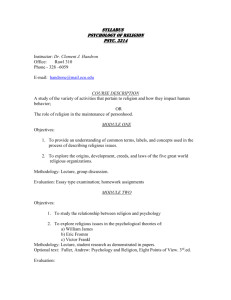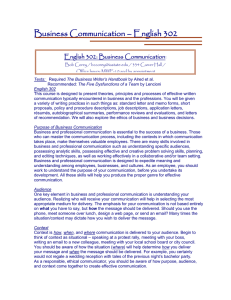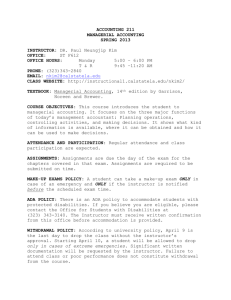Journalism 1: Mass Communications and the Individual
advertisement
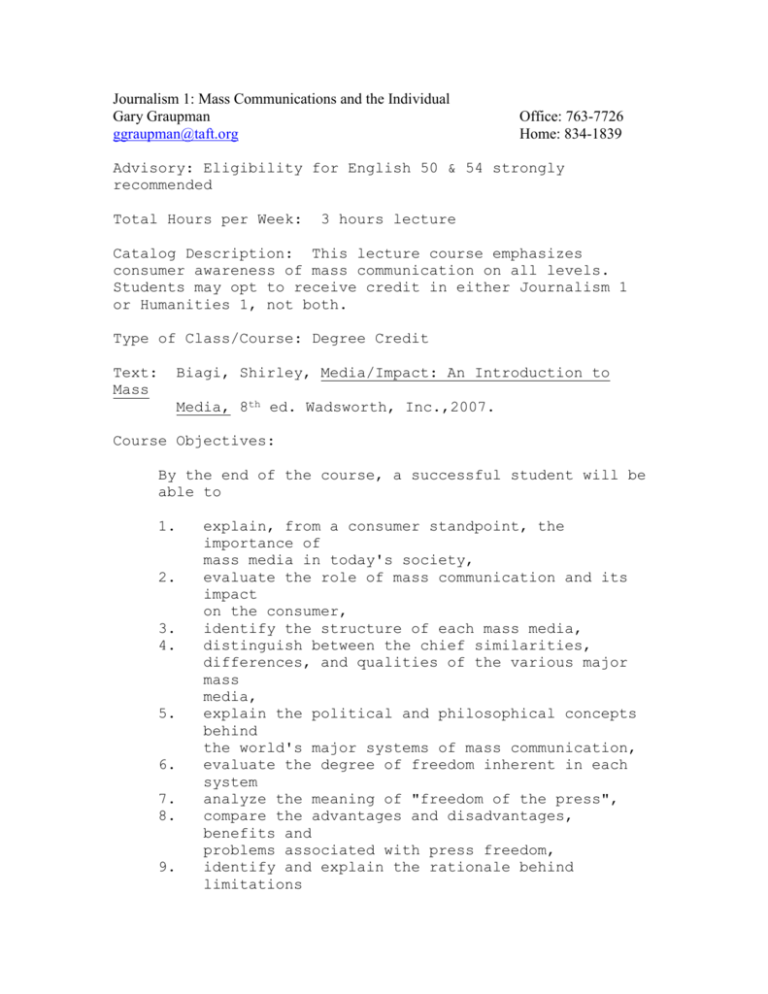
Journalism 1: Mass Communications and the Individual Gary Graupman ggraupman@taft.org Office: 763-7726 Home: 834-1839 Advisory: Eligibility for English 50 & 54 strongly recommended Total Hours per Week: 3 hours lecture Catalog Description: This lecture course emphasizes consumer awareness of mass communication on all levels. Students may opt to receive credit in either Journalism 1 or Humanities 1, not both. Type of Class/Course: Degree Credit Text: Mass Biagi, Shirley, Media/Impact: An Introduction to Media, 8th ed. Wadsworth, Inc.,2007. Course Objectives: By the end of the course, a successful student will be able to 1. 2. 3. 4. 5. 6. 7. 8. 9. explain, from a consumer standpoint, the importance of mass media in today's society, evaluate the role of mass communication and its impact on the consumer, identify the structure of each mass media, distinguish between the chief similarities, differences, and qualities of the various major mass media, explain the political and philosophical concepts behind the world's major systems of mass communication, evaluate the degree of freedom inherent in each system analyze the meaning of "freedom of the press", compare the advantages and disadvantages, benefits and problems associated with press freedom, identify and explain the rationale behind limitations 10. 11. 12. 13. 14. 15. 16. sometimes placed on "freedom of the press", explain the concept of responsibility of the press, agencies formulating codes to further this concept, present codes, and changing responsibilities brought on by changing lifestyles, identify the forces which shape the content of the mass media, compare and contrast the ethics and rights of each media, list problems in determining what to present or not to present, explain the need for standards of truth and fairness in news reported by the media, compare and contrast the responsibilities of the media, the public, and government, and list the consequences of attempts aimed at restricting press freedoms. Attendance: A direct correlation exists between attendance and learning. As a consequence, students need to attend class regularly. If students miss more than three class meetings without a valid excuse, they will be dropped from the class, perhaps unexpectedly. Negotiate all absences you wish excused with the instructor. Roll will be taken at the beginning of class. If you come in after the roll call, you are tardy. Athletes, makes sure you tell me if you missed class because of an away game. Three tardies will count as an absence. Grading and Evaluation: Students will be graded on the number and quality of the assignments turned into the instructor. In addition, part of the grade will be determined by participation. A point system (percentage) will be used and weighted as follows. 90%-100% 80%-89% 70%-79% 60%-69% 0%-59% Late Work: A B C D F Quizzes Midterm and final Journal and participation (10% off per class meeting for non participation) Papers 20% 40% 10% 30% All assignments are due at the beginning of class of the class period on the date assigned. If you are absent (for a compelling reason!), the assignment is due at the beginning of the next class meeting. Grades will be lowered by one half letter grade for each meeting date late. Journal: Everyone will keep a journal with at least one entry per week. Journal entries should be at least a paragraph in length (a paragraph is 5 to 8 sentences and a sentence is 10 to 15 words) and deal with some aspect of mass media as discussed in class. Concerns, questions, assignments, etc. are appropriate subjects for entries. Academic Honesty: Plagiarism will not be tolerated. Any student who plagiarizes will receive an “F” on that assignment and may be dropped from the class. We will discuss plagiarism in class. If you are not sure if you are plagiarizing, please ask. Dates to Remember: Mid-Term Exam—Eighth Week of the Semester Final Exam—As scheduled by the Dean of Instruction. Pick up a copy of the final exam schedule in the counseling center. Office Hours: I will be pleased to meet with those students who need additional help. My office hours are post on my office door. My office is located in the Technical Building T8. Also, appointments may be made outside of office hours. Speak to me about available times. Taft College recommends that students with disabilities discuss academic accommodations with their professors during the first two weeks of class. An alternate format of this syllabus and class handouts is available upon request. Regular and punctual attendance will insure you are up to date with assignments and any changes that may occur in the course schedule as deemed necessary by the instructor. I expect you to be on time and in class every class meeting. Learning Outcomes Asses and compare and contrast various forms of ads and ad campaigns Assess and predict the future of each medium on a national and international scale Assess and compare and contrast various public relations campaigns Understand, explain, and defend different public relation campaigns Differentiate between legitimate uses of public relations vs. propaganda Understanding the different forms of media in daily life Understanding how the different media are interrelated and how they differ Understanding of technology and how it affects the media and daily lives Understanding how each medium affects our daily lives Assess and compare and contrast different media in this country and globally Analyze and assess possible bias in the news industry Assess and compare and contrast different presentations of sides to issues Propose and predict possible changes to current media law and procedures Understand and differentiate between ethical and unethical media practices Understand basic principles of global marketing and public relations
